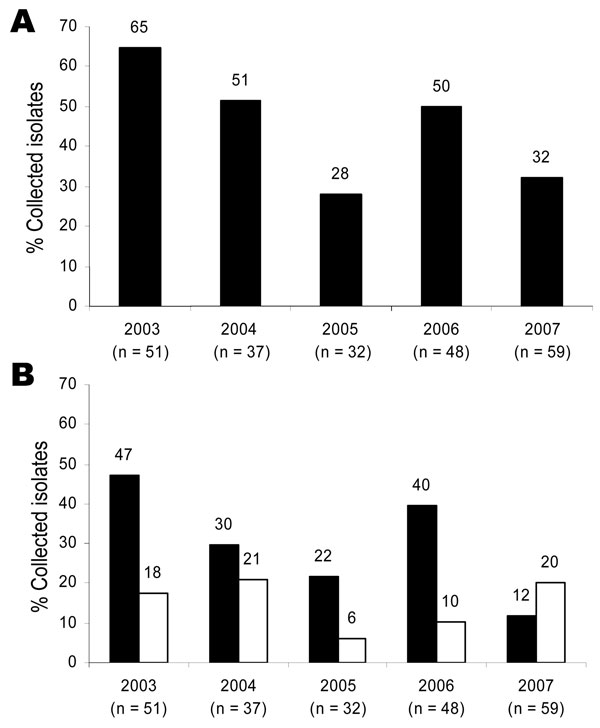Volume 15, Number 5—May 2009
Dispatch
Reduced Fluoroquinolone Susceptibility in Salmonella enterica Isolates from Travelers, Finland
Figure 1

Figure 1. Ciprofloxacin susceptibility and quinolone resistance in 227 Salmonella enterica isolates collected from travelers returning to Finland from Thailand or Malaysia, 2003–2007. A) Percentage of isolates showing reduced ciprofloxacin susceptibility (black bars, MIC >0.125 µg/mL, p = 0.002). B) Percentage of isolates showing conventional (black bars, MIC of nalidixic acid >32 µg/mL, p = 0.0014) or nonclassical (white bars, MIC of nalidixic acid <32 µg/mL, p = 0.878) quinolone resistance phenotype.
Page created: December 16, 2010
Page updated: December 16, 2010
Page reviewed: December 16, 2010
The conclusions, findings, and opinions expressed by authors contributing to this journal do not necessarily reflect the official position of the U.S. Department of Health and Human Services, the Public Health Service, the Centers for Disease Control and Prevention, or the authors' affiliated institutions. Use of trade names is for identification only and does not imply endorsement by any of the groups named above.